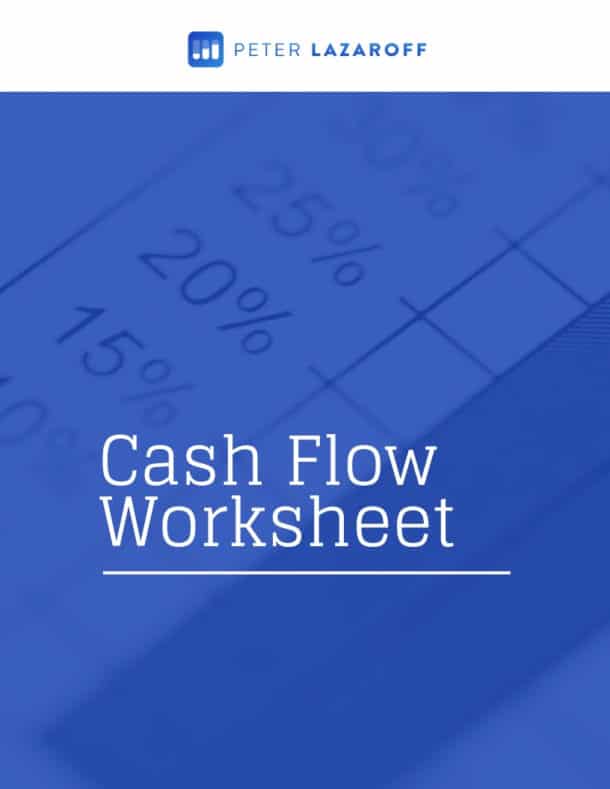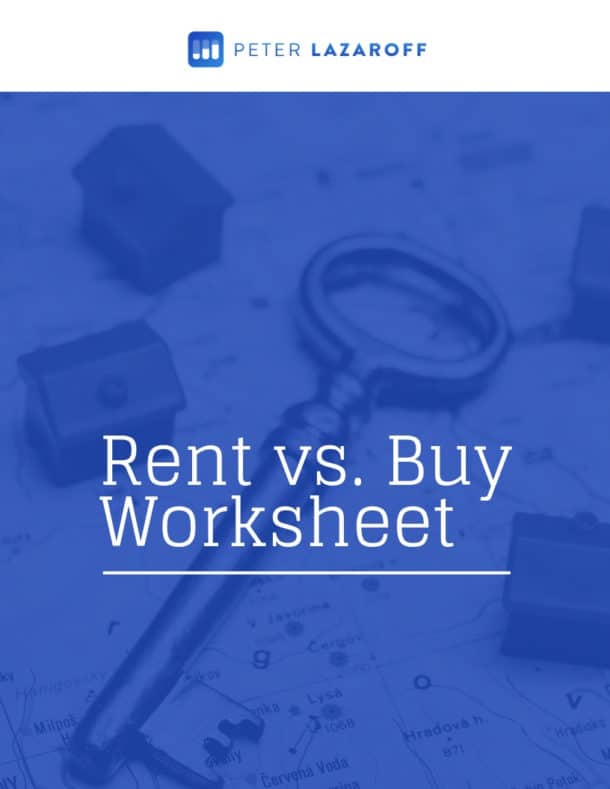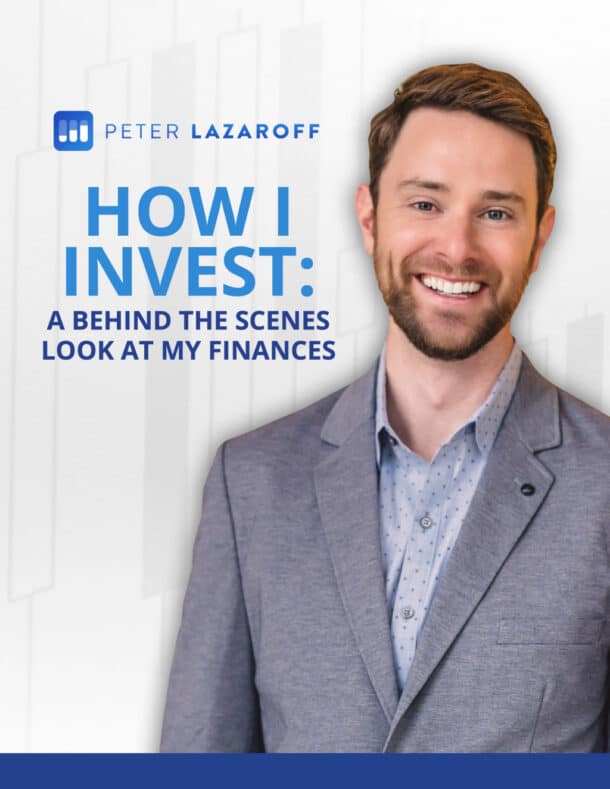In this episode, I’m joined by Jeremy Schwartz, Global Chief Investment Officer at WisdomTree.
Prior to joining WisdomTree in 2005, Jeremy was a head research assistant for Professor Jeremy Siegel and, in 2022, became Professor Siegel’s co-author on the sixth edition of the book Stocks for the Long Run.
Listen now and learn:
- Why you should want to own stocks right now
- Why fundamental indexing is better than indexing
- How to manage cash in the current yield environment
Watch Now
Listen Now
Show Notes
In this episode, I’m joined by Jeremy Schwartz, Global Chief Investment Officer at WisdomTree. There he leads WisdomTree’s investment strategy team in the construction of WisdomTree’s equity indexes, quantitative active strategies, and multi-asset Model Portfolios.
Prior to joining WisdomTree in 2005, Jeremy was a head research assistant for Professor Jeremy Siegel and, in 2022, became Professor Siegel’s co-author on the sixth edition of the book Stocks for the Long Run.
We talk a little bit about how Jeremy met Professor Siegel and first got involved in the writing of the book, and we cover a lot of the important ideas from the book and how they apply to the market environment today.
Here are my notes from our conversation…
How Jeremy Got Involved in the Writing of Stocks For The Long Run (1:30)
In this newest edition of Stocks For The Long Run, Jeremy is named a co-author for the first time, but he has worked with Professor Jeremy Siegel for quite some time on past editions.
When Jeremy was an undergraduate at Wharton, he was part of the Wharton Dean’s Advisory Board, which was tasked with organizing seminars and discussions with the university’s acclaimed professors. Professor Siegel failed to show up at one of the seminars that Jeremy Schwartz was hosting.
In reaching out to Professor Siegel with concern for his well-being, Jeremy apparently left a good impression on the professor because in the spring of 2001 Jeremy was accepted into the Professor’s class that required a competitive application process. At this time, the Professor was very well known on Wall Street, always on CNBC talking about the bursting of the tech bubble.
Prior to doing a semester abroad in Australia, Jeremy needed something to do for a few months and reached out to the Professor to offer free assistance on projects. As it so happened, Professor Siegel was in the process of doing the third edition of Stocks For The Long Run. One thing led to the next, and Jeremy never went to Australia, but instead helped Professor Siegel finish the book, which was published in September 2001.
Shortly thereafter, they wrote a second book, The Future For Investors. And from there, the partnership between Jeremy Schwartz and Professor Siegel continued to snowball for the next 20 years. Now, as co-author of the sixth edition of Stocks For The Long Run, Jeremy Schwartz is happy to carry the torch forward into the future.
What’s New in the Sixth Edition of Stocks For The Long Run? (4:30)
I’m curious about how someone goes about updating a book that is already considered a classic and appears on all sorts of “Best of” lists.
Jeremy points out that there are so many charts and tables in the book, so adding in the latest data is relatively basic. But this particular edition included more new chapters than any prior update to the book.
There are several new chapters on factor and value investing, ESG investing, real estate, the pandemic, inflation, etc.
The long-term principles don’t change, but there are always new angles to tackle using the latest research.
Why You Should Want to Own Stocks Right Now (6:00)
Stock markets are in a bear market, while yields on short-term Treasury bills and cash are high. It’s tempting to question whether stocks are a good value versus safer assets. After all, it’s not uncommon for investors to focus more on what’s working right now rather than focus on what has always worked in the data going back to 1802.
The longer the horizon, the better your chances that stocks are going to beat bonds or cash. And while stocks are clearly the most volatile asset in the short run, the data of long-term returns after inflation (i.e. real returns) show that bonds are riskier in the long run.
There are people that question the usefulness of data from hundreds of years ago because the world is so different now, but there is a fundamental relationship driven by valuations that is just as relevant today as it was 200 years ago.
The average real return for stocks, which are their returns after inflation, is 6.9%. The average price-to-earnings (P/E) ratio going back 150 years was around 15. From the price paid for earnings (P/E ratio) we can derive the earnings yield by simply dividing one by the P/E ratio. One divided by 15 gets you close to six…which is very close to that long-term 6.9% real return stocks have earned.
Today, bond yields would suggest they are in for a period of returns that is well below their average long-term real return of about 1%. Stocks, on the other hand, have a P/E ratio of about 20, which translates to an earnings yield of 5%.
All this is to say that there is a fundamental relationship driven by valuations that hold across different time periods, asset classes, and geographies.
Thinking About Long-Term Returns Given Higher Valuations (13:25)
When we talk about the long-term real return on stocks averaging 6-7% over the entire dataset as well as throughout various subsets of the data, there are reasons supporting a higher equilibrium P/E ratio.
For starters, cost is a major factor in the return investors earn and keep. Today you can own the entire market for almost no cost whereas historically transaction costs were at least 100 basis points across time (and likely much higher at some times).
With that in mind, investors were never really earning the full 6-7% real return. They were earning much less. So if current valuations put an expected long-term real return for stocks at closer to 5%, that might not actually be that different than what investors of decades past earned.
The latest edition of the book also focuses on new chapters on the driving forces for real interest rates that are applicable to this part of our discussion. There’s a strong case and secular story that real rates will remain lower for longer, which also supports the notion of a higher default/equilibrium valuation level.
The number Jeremy comes back to several times (as does the book) is a 5% real long-term return for stocks, which is still a very reasonable equity premium, especially when compared to the paltry real return outlook for bonds and cash.
Why is Fundamental Weighting Is Better Than Indexing (17:00)
Professor Siegel will regularly remind others that he was a Vanguard investor and proponent of index investing ever since the 1970s. But it was the tech bubble of the late 1990s that made him question whether a market-cap-weighted approach was optimal.
There are reasons that market-cap-weighted indexes perform well. They have low turnover, are tax-efficient, low cost, and they don’t rely on active management.
But as Siegel was famous for calling the tech bubble in the late 1990s, he pointed out that nine stocks with triple-digit P/E ratios and very high multiple tech stocks made up a third of the market cap weighting.
If you believe that markets are not perfectly efficient and prices can move away from their fair value, then an opportunity to do better than the overall market exists. You just have to figure out what to rebalance back to in terms of trying to capture these pricings away from fair value.
There’s a whole host of fundamental metrics you can use other than price (or market capitalization). Whether it’s earnings, dividends, book value, profitability, multifactor…de-anchoring from the price being the driver of the weight and deciding how often to rebalance is essentially what someone who is taking a fundamental or factor approach to investing is doing.
The more differentiated you are with fundamentals from a market-cap-weighted index, the more value titled you become towards lower-priced stocks. Jeremy brings it back to the first principle of where stocks get their gains: they come from price relative to their fundamentals.
So even in a market environment where the long-term expected real returns on stocks might be lower than historical averages, a fundamental or factor approach to investing helps bring the earnings yield back up to something more closely aligned with the 6-7% long-term real return stocks have provided in the past.
Global diversification (22:20)
A few financial giants, specifically Jack Bogle and Warren Buffett, have made public statements that make people feel that international diversification isn’t necessary. Jeremy and I both fully disagree.
With Jack Bogle, his argument is based mostly on the currency risk of different companies. But you can hedge out currency risk if you wanted, but diversified currency exposure can also be viewed as a benefit. It’s also worth noting that Jack Bogle thought ETFs were bad…
Meanwhile, Warren Buffett saying that his entire estate will be put into an S&P 500 fund misses a lot of nuances. For starters, he has a different level of wealth and different types of objectives than just about every human on the planet. Only owning the S&P 500 may generate a sufficient return for his estate, but the evidence would suggest that the volatility experienced for that return is not optimal.
Also, Warren Buffett himself is buying Japanese stocks, which is in conflict with the idea of just owning the S&P 500. Why is he buying Japanese stocks? Because they’re cheap!
One of the chapters in Stocks For The Long Run emphasizes an important point: growth is not return.
When you look at 220 years of data, the strongest GDP growth did not generate the highest return – actually it was usually the reverse.
I asked Jeremy to share the example from his book that compares IBM and Exxon…
If you had a crystal ball on every fundamental metric for these two companies over 60 years, most people would choose to invest in the one with higher growth rates in revenue, profitability, dividends, etc. But as it turns out, the lower growth of the two (Exxon) produced better returns because it had a 12 P/E on average throughout the period compared to IBM’s average P/E of 22.
It all comes back to valuation and what’s priced into markets. So yes, the U.S. looks poised to have better growth than other markets, but a globally diversified portfolio gives you a much better valuation than investing in the U.S. markets only. And if you’re tilted to cheap stocks through factor or fundamental investing, your valuation is that much lower.
Inflation (30:30)
Following the global financial crisis, the primary risk was deflation – central banks couldn’t get inflation back up to 2% despite taking all sorts of extraordinary measures.
But now, Jeremy believes the Fed has forgotten some of the very fundamental principles of what drives inflation and he’s discouraged by some of the Fed’s comments. Most notably, the Fed has made comments suggesting that the money supply has no relation to inflation.
There was an explosion in money supply of 40% right after the pandemic, but the expansion in money supply was very different from what happened during the financial crisis. During the financial crisis, the Fed was buying bonds, but all those excess reserves remained on bank balance sheets and didn’t actually flow into the economy.
But during the pandemic, the government relief efforts flowed directly to consumers and the Fed financed all of it and kept rates much lower, which created a lot more inflation as the money supply expanded by 40%.
But what’s more concerning to Jeremy now is that the money supply is shrinking – something that hasn’t happened in 90 years, when it had a 16 basis point decline in 1958. Money supply tends to grow about 5% per year, which is essentially 2-3% inflation and 2-3% real growth in the economy. This is just basic Finance 101 stuff.
So why is the Fed not concerned about the money supply contracting?
In Jeremy’s view, it’s because the Fed is using stale data and they’d actually be seeing deflation if they looked at real-time data. Even though the data isn’t signaling an economic slowdown yet, he worries that the Fed is tightening too much and creating unnecessary pressures on the economy.
This is something that Jeremey and Professor Siegel talk about extensively in the book, so you can read more details on these views there.
Managing Cash in Today’s Environment (35:00)
Jeremy talks about going into his checking account and moving funds to his brokerage account more than ever before. In the last two decades, it didn’t matter because rates were basically zero, no matter where you had your cash.
But now, leaving money in your checking account is costing you 5% because (as of this recording) you can get very close to 5% in Treasuries. There are also products like WisdomTree Floating Rate Treasury Fund with a one-week duration that is yielding close to 5%.
Jeremy also notes that bonds are more attractive than they’ve been in a long time. Even high-yield bonds where you can get roughly 8% are intriguing compared to the S&P 500 which has an earnings yield of about 5%.
In short, if you’re not managing your cash, you’re losing out on the interest you deserve.
Resources:
- Stocks for the Long Run by Prof. Jeremy Siegel and Jeremey Schwartz
- Jeremy’s Podcast: Behind the Markets
- WisdomTree Office Hours
- Twitter: @JeremyDSchwartz
- EP 91: When Will The Bear Market End?
- WisdomTree Floating Rate Treasury Fund
Submit Your Question For the Podcast
Do you have a financial or investing question you want answered? Submit your question through the “Ask Me Anything” form at the bottom of my podcast page.
If you enjoy the show, you can subscribe wherever you listen to podcasts, and please leave me a review. I read every single one and appreciate you taking the time to let me know what you think.
About the Podcast

Long-term investing made simple. Most people enter the markets without understanding how to grow their wealth over the long term or clearly hit their financial goals. The Long Term Investor shows you how to proactively minimize taxes, hedge against rising inflation, and ride the waves of volatility with confidence.
Hosted by the advisor, Chief Investment Officer of Plancorp, and author of “Making Money Simple,” Peter Lazaroff shares practical advice on how to make smart investment decisions your future self with thank you for. A go-to source for top media outlets like CNBC, the Wall Street Journal, and CNN Money, Peter unpacks the clear, strategic, and calculated approach he uses to decisively manage over 5.5 billion in investments for clients at Plancorp.
Support the Show
Thank you for being a listener to The Long Term Investor Podcast. If you’d like to help spread the word and help other listeners find the show, please click here to leave a review.
Free Financial Assessment
Do you want to make smart decisions with your money? Discover your biggest opportunities in just a few questions with my Financial Wellness Assessment.

















